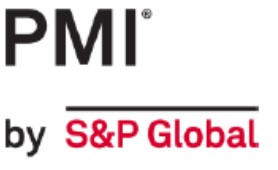The Global Purchasing Managers’ Index (PMI) for manufacturing produced by J P Morgan using the data from S&P Global dropped back to 49.0 (49.3 in November), extending the run of sub-50 readings to 16 months. Both output and new orders contracted, with the fall in output concentrated in the intermediate goods sector – consumer and, most importantly, investment goods did see output increase slightly.
The UK also saw its manufacturing PMI fall back in December and the reading of 46.2 was also slightly lower than the flash figures that we reported before Christmas. The UK manufacturing PMI has been below the crucial 50 level for 17 months. The fall in output accelerated compared to the November reading although unlike the global trend, this was a case of falls for intermediate and consumer goods outweighing an expansion for investment goods – the latter is of most importance to MTA/EIA/AM-UK members so perhaps a small glimmer of hope as we go into 2024.
For the Euro-zone, while there was a mix of trends compared to November, only Greece (51.3) had a PMI above 50 (implying an expansion of activity in the sector. For the Euro-zone as a whole, the reading edged up but at 44.4, it remains firmly in negative territory for the 18th month in a row. The index improved a little in both Germany and Italy but in both cases (43.3 and 45.3 respectively) it is well below the crucial 50 threshold; however, France saw the largest fall in its index (from 42.9 in November to 42.1) since the pandemic.
For the other EU countries which don’t use the Euro, three of them – Czechia, Poland and Sweden -saw a further deterioration in their PMI which was already below the neutral threshold and had been for 19, 20 and 12 months respectively; Czechia had (just) the lowest overall manufacturing PMI although direct comparisons are not always valid, especially at the detailed level. The outlier was Hungary where the already positive manufacturing PMI improved to 52.8 (the highest for 7 months and the 3rd positive in a row).
Finally in this part of the world, Switzerland and Türkiye both saw an improvement while remaining firmly negative.
Asia has generally negative trends compared to November; Japan and Taiwan saw their already sub-par readings fall again while South Korea and the ASEAN group dropped off the neutral PMI they recorded last month. The two contra-cyclical countries were China where the PMI just ticked up fractionally from 50.8 to 50.9 and India, which despite slipping back from November, still had the highest reading in this analysis at 54.9.
Lastly, in terms of release timings at least, is the Americas; here, Brazil, Canada and the USA all saw their already sub-threshold manufacturing PMIs fall again in December – indeed, Canada had the largest fall compared to the November figure in this report.. The other two countries we cover in this region had different routes to achieving the same manufacturing PMI of 52.0; Columbia had the largest increase in the PMI reading compared to November to register its first positive figure since April, while Mexico saw the already positive number fall back a little.
Overall in our analysis, only China, Columbia, Greece, Hungary, India and Mexico had manufacturing PMI’s above 50 in December.
The individual S&P Global PMI reports are available to download on their web-site at https://www.pmi.spglobal.com/Public/Release/PressReleases but we also have a summary charts report which is available to download below. You should note that the PMI readings for Hungary, Sweden and Switzerland are not compiled by S&P Global but can be found with an appropriate internet search (it also means that they are not part of the global PMI calculation).

